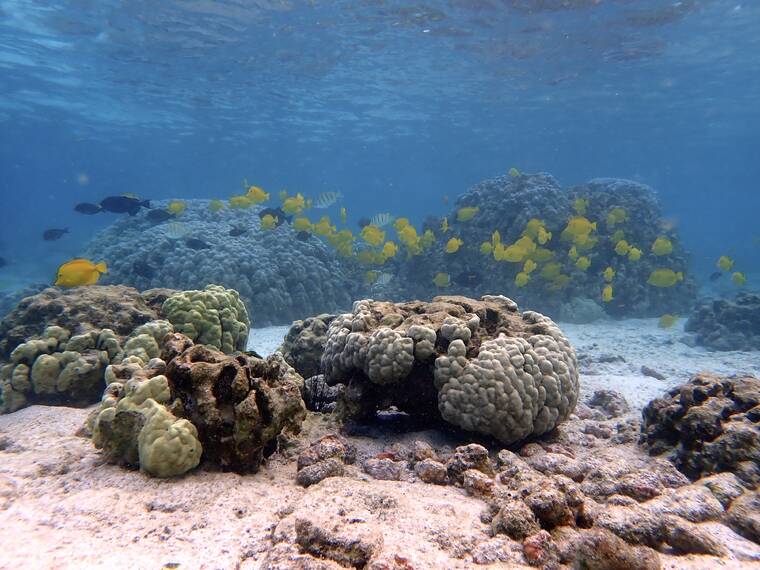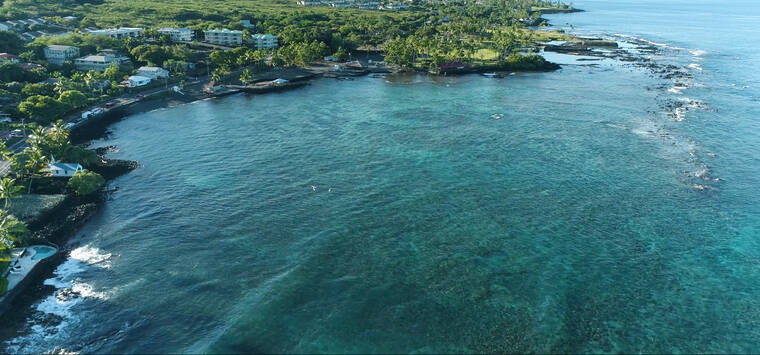Kahaluu Bay named ‘Hope Spot’ by nonprofit Mission Blue


COURTESY KAHALUU BAY EDUCATION CENTER
Yellow tangs and coral at Kahaluu Bay, which has been designated a Hope Spot by Mission Blue.

COURTESY THE KEEPER OF BAY PRODUCTION
Kahaluu Bay on Hawaii island’s west side has been designated a Hope Spot by Mission Blue.



Mission Blue, an international nonprofit, has named Kahaluu Bay on Hawaii island’s west side a Hope Spot.
Hope Spots are special places that are scientifically identified as critical to the health of the ocean and championed by local conservationists, according to Mission Blue. They are selected after a nomination process.
Kahaluu has become the 141st Hope Spot worldwide and the second in Hawaii, following Olawalu Reef’s selection in 2017.
Mission Blue also named Cindi Punihaole, director of The Kohala Center’s Kahaluu Bay Education Center, and Christine Zalewski, president of Dear Ocean, as Hope Spot Champions.
Mission Blue founder Sylvia Earle noted that Kahaluu Bay is rich in cultural and natural resources, and that its ancient coral reef system provides critical habitat for hundreds of species.
“Kahaluu Bay serves as a model for other smaller bays around the world and shows how they too can harness the deep relationships between people and the environment to protect these cherished places,” said Earle in a news release. “[The] bay has become a beacon of hope and a source of inspiration for the community.”
Don't miss out on what's happening!
Stay in touch with breaking news, as it happens, conveniently in your email inbox. It's FREE!
Kahaluu Bay and its surrounding waters are home to several endangered and threatened species, including Hawaiian monk seals, humpback whales, green turtles and hawksbill turtles, according to Mission Blue.
It is also a critical habitat for hundreds of fish and invertebrate species, approximately a quarter of which are endemic, meaning found nowhere else in the world.
It has more recently become a popular snorkeling spot for visitors from around the world.
The designation is important as the natural and cultural resources of the park have been degraded by an increase in chronic stressors over the past few decades, including more than 400,000 beachgoers each year, poor water quality from nearby cesspools, increased runoff from development, coastal damage from rising sea levels, and climate change.
Punihaole and Zalewski are both working to reverse the damage through community engagement, ecological monitoring, education, and advocacy.
“The land, the sea, the air, and the people are all connected,” said Punihaole in the news release. “It’s this connectedness that extends the size of Kahaluu Bay far beyond its physical boundaries.”
Mission Blue rallies local and international communities to support Hope Spots, with the ultimate goal of converting them into marine protected areas.




